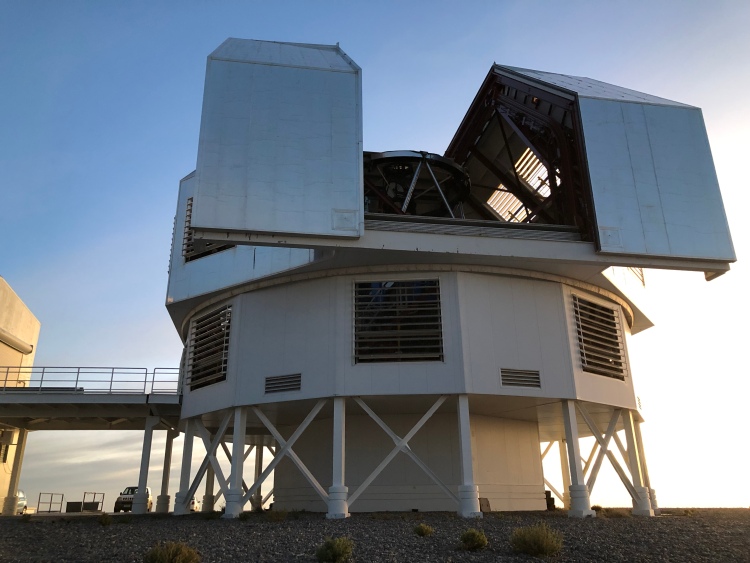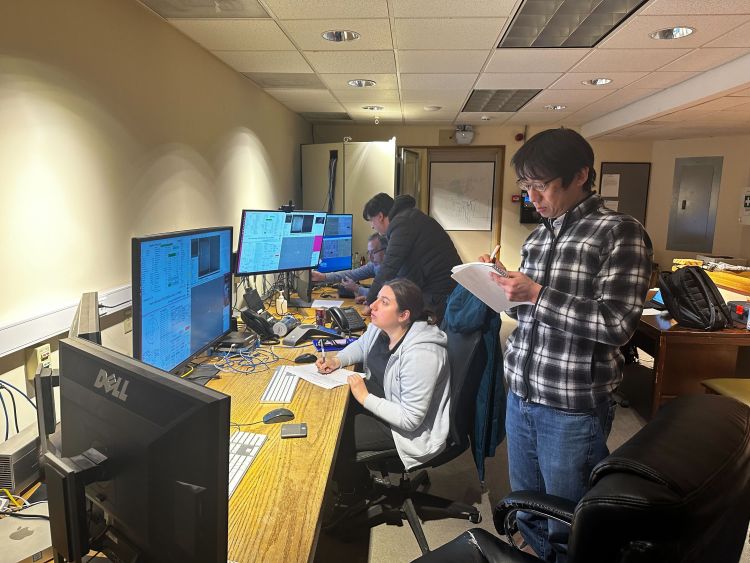The WINERED High Dispersion Near-Infrared Spectrometer is an astronomical observation spectrometer that exhibits high wavelength resolution at wavelengths of about 1 micron, where the absorption and emission lines of various atoms and molecules are concentrated. It has the highest sensitivity in the world, and is used on a variety of astronomical topics in conjunction with the 6.5-meter Magellan telescope. This time, we will highlight some of these topics and present recent findings.
- Illustrating chemical evolution in the Milky Way using Cepheid variable stars
- Clarifying the relationship between the metal content in the atmosphere and the dissipation of exoplanets in the atmosphere
- Explaining the process of gas dissipation in protoplanetary disks
In addition to these research results, there are also observational results of globular clusters near the center of the Milky Way using the Magellan Telescope (Minetti et al. 2024) and observation results from the 3.6 m diameter NTT telescope (La Silla Observatory, Republic of Chile), which was in operation before WINERED was transferred to the Magellan Telescope (Mizumoto et al. 2024), a development paper on the WARP program to organize complex observational data obtained using WINERED and convert them into spectral data that is easier for researchers to use (Hamano et al. 2024), research results related to WINERED are published one after another as research papers. Observations with the Magellan Telescope require preparations for observations in extremely harsh environments due to its high location, but astronomers alone cannot make such preparations and maintain and manage the equipment. During each spring and fall observing season, Kamiyama Observatory technical staff from Japan travel abroad for approximately one to two months to provide observing support and equipment upgrades. Academic results such as those presented here can only be achieved through the collaboration of professionals from different positions.



Noriyuki Matsunaga (an assistant professor at the Graduate School of the University of Tokyo and a visiting researcher at our university) plays a central role in exploring the metallicity of Cepheid variable stars in our Milky Way Galaxy. Cepheid variable stars are a type of variable star whose brightness fluctuates. They play an important role in astronomy, as their true brightness can be determined by their period of change. Furthermore, since it is possible to determine to some extent the age at which light fluctuation phenomena occur (the number of years since a star was born), it can provide clues to our Milky Way's past. The preliminary results have already been published in the US Astrophysical Journal, and the history of nucleosynthesis near the center of the Milky Way has become clear. Cepheid variable stars are also one of the research subjects of astrophysicist Dr. Shunma Araki, founder of Kyoto Sangyo University, and observational research on Cepheid variable stars is carried out by WINERED, which was developed at the Kamiyama Observatory, proving that this kind of astronomical research is a tradition at our university.
Magazine link (in English)
Matsunaga et al. “Classical Cepheid Minerals in the Inner Galactic Disk”
Clarifying the relationship between the metal content in the atmosphere and the dissipation of exoplanets in the atmosphere
Magazine link (in English)
Visapragada et al. “No high-resolution detection of escaping helium in superheated Neptune LTT 9779b: evidence for weak evaporation”
Explaining the process of gas dissipation in protoplanetary disks
Magazine link (in English)
Katoh et al. “[N i] 10400/10410 Å lines as potential tools for tracking disc winds in a young, intermediate-mass star”

“Travel maven. Beer expert. Subtly charming alcohol fan. Internet junkie. Avid bacon scholar.”






![[معهد كامياما لعلوم الفضاء]Current status of WINERED near-infrared high dispersion spectroscopy: new research results are published one by one | [معهد كامياما لعلوم الفضاء]Current status of WINERED near-infrared high dispersion spectroscopy: new research results are published one by one |](https://www.kyoto-su.ac.jp/common-wr/ahcetq00000000bl-img/ogimage_ksu.jpg)
More Stories
The ranking of the best survival horror games selected by the IGN US editorial team has been released! Resident Evil RE:2 ranked first
Enjoy a hot cigarette while looking at whales and tropical fish under the sea ⁉︎ “Ploom Dive” is an amazing spatial video experience using Apple Vision Pro
Apple Watch now supports sleep apnea, watchOS 11 released – Impress Watch